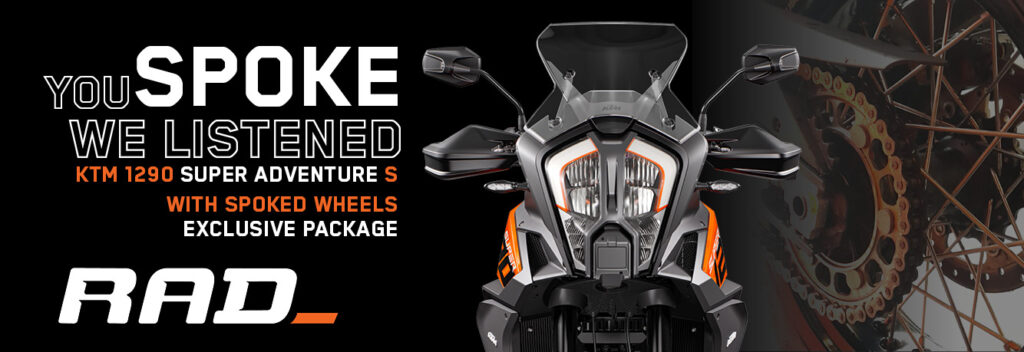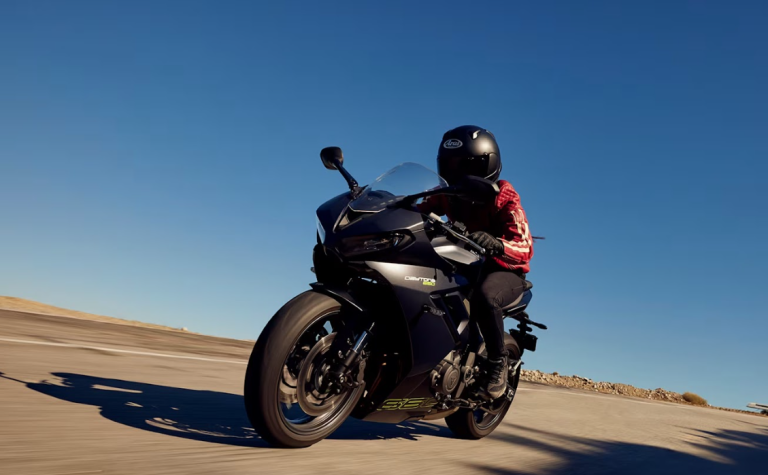Two steps forward and one step backwards…. Or is it?
Triumph’s brilliant 765 Daytona has always been their middleweight superbike.
It quietly slipped off the dealer stock lists without too many eyebrows being raised or questioning frowns. It has always punched way above its weight class, often surprising bigger capacity bikes with its straight line speed and more often than not outclassing them in the twisty stuff.
But Triumph has a plan for that brand:
The Daytona is making a reappearance in the market, in Europe anyway and we do hope they make it to our shores. The last version we saw here was the 765cc Moto2 inspired version.
The new Daytona uses the Trident naked as a base, with a number of internal revisions to provide an increase in performance. Power is a claimed 93.7bhp at 11,250 rpm which is around 17% more than the Trident, with just under 70nm of torque peaking at 8,250 rpm.
That’s about 9% extra over the Trident, 80% of which is on tap from just 3,125 rpm and that’s good!
More torque lower down in the rev range makes the bike much more useful in everyday situations and possibly a bit faster off the line and out of corners. They have managed to achieve this with a bunch of upgraded engine internals, including a new crankshaft, new camshaft and cam profile, new cylinder head, new pistons, and new gudgeon pins. The valve gear is also new – as is the three into one exhaust, with compression also raised slightly to 12.05:1. And we believe a quickshifter/autoblipper is also available as an optional extra, while three riding modes are provided as standard.
So what is Triumphs smaller capacity thinking here?
This seems to be the trend at the moment, case in point is Yamaha’s R7 which in our humble opinion should rather have been designated as the MT 07 R.
The original bearer of the R7 marque was a fire breathing WSBK track weapon and the current iteration is a very different beasty.
The thing is, according to sources at the launch of the new bike, Triumph mentioned that the new 660 Daytona is not quite as sporty or as performance focused as the current Yamaha R7….
Huh? We had to read that a couple of times…
They say, the 660 is not all about flipping through the twisties as fast as possible anymore. Instead, it’s set to offer a softer approach to sporty riding, providing a middleweight that can be used on a daily basis. Whilst that stance won’t appeal to some fans, they are hoping it will prove to be a hit with riders moving up to a bigger bike, as well as older riders wanting a less aggressive riding experience for their wrists and knees who are not quite ready to give up the sport bike life.
One day, perhaps we will get to ride it to deliver an informed opinion on that…
It is a beautiful looking machine, they do just seem to have a knack for creating moving art.
It gets a contemporary look, with a front-end that takes clear inspiration from its predecessor, which is a very good thing. From what we have been able to determine, the 660 Daytona will be available in three colours. You also get LED lighting all round, with a flashing hazard warning under hard braking. Tucked in behind the screen is a part LCD, part TFT dash that is phone compatible for turn-by-turn navigation, (HALLELUJAH!! Finally another manufacturer that is actually providing some properly useful tech in the real world – where have we seen this before???).
To further personalise your Daytona, there are over 30 official accessories available including heated grips and a USB socket.
And they haven’t just slapped a fairing and a sporty tank onto a Trident.
With all the engine upgrades comes a host of chassis and suspension improvements:
The frame has been altered for greater agility. The pegs are 10mm higher, and 15mm further back than on the Trident, with the handlebars forward by 95mm and down by 110mm for sportier ergonomics. These clip-on bars sit above the top yoke to create a more sports focused position without creating discomfort at slower speeds. The seat height is 810mm, which can be lowered to 785mm with a different seat. Suspension is 41mm Showa big piston forks, (we have seen those on Honda’s CB 500X and, for that bike anyway, they are brilliant), and a preload adjustable rear shock.
Michelin Power 6 tyres on 17in five-spoke cast aluminium wheels connect you to the road and they are partnered with dual 310mm discs upfront, gripped by four-piston radial callipers complete with braided lines and ABS.
Well, the motor might be smaller than the 765 and the ride less aggressive, but it does seem that this is going to be another great little bike from the Hinckley factory.


















